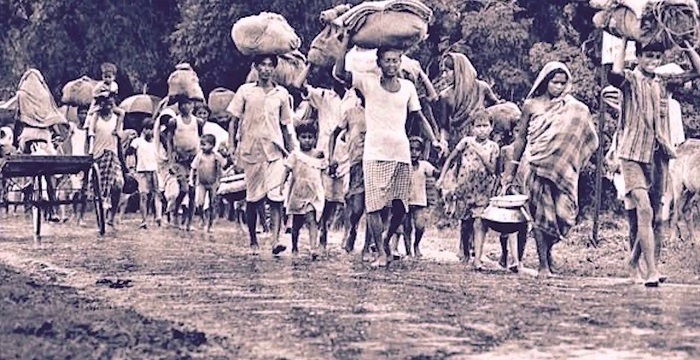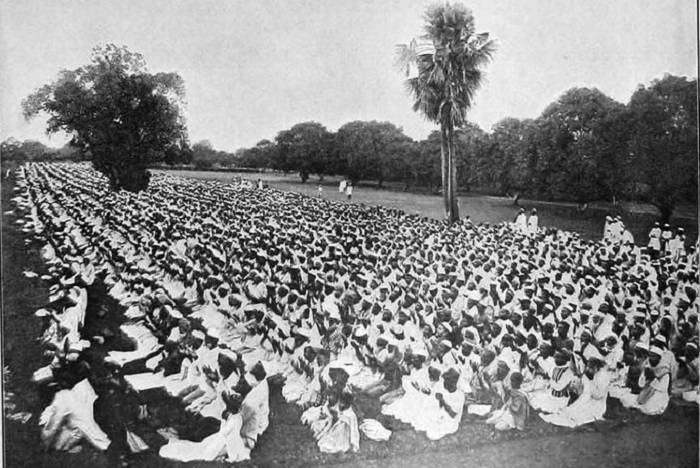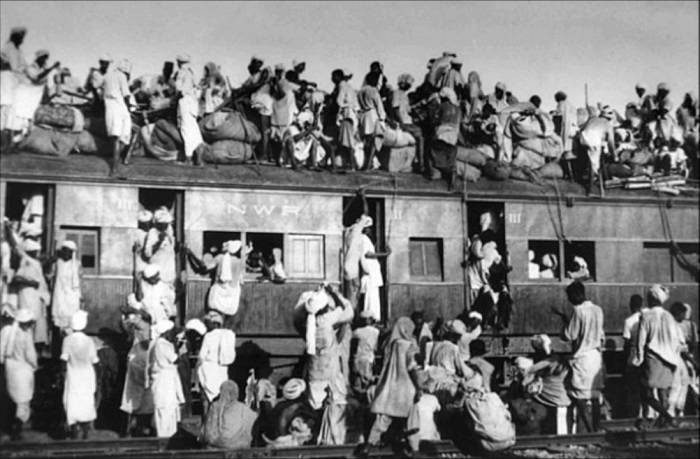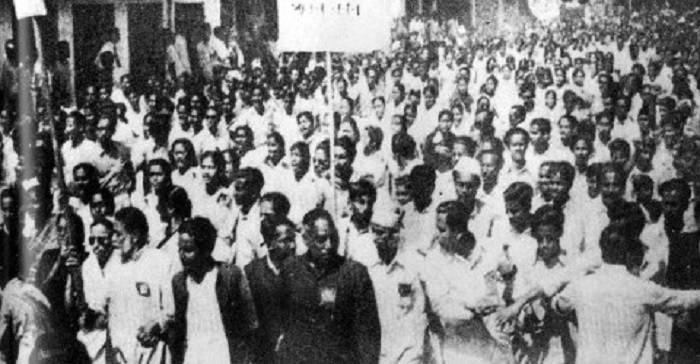The partition of India led to the partition of Bengal (1947) dividing the British Indian province of Bengal into two. The western part with predominantly Hindu population became a part of India (West Bengal), while the predominantly Muslim eastern part (East Bengal) became a part of Pakistan. Prior to the partition of India, many rounds of deliberations took place to decide the future of Bengal, but no consensus among the members of the Bengal legislative Assembly belonging to West and East Bengal could be reached. Thus, the partition of British Indian province of Bengal was done according to the ‘June 3 Plan,’ also known as the ‘Mountbatten Plan.’ East Bengal, which was a part of Pakistan until 1972, is currently the People’s Republic of Bangladesh.
Historical Background
The first partition of Bengal was proposed in the year 1905 by the then Viceroy of India, Lord Curzon. The size of the state was mentioned as the reason of partition but the real motive behind the partition was the British policy of dividing Hindus and Muslims (East Bengal had a majority of Muslims, while West Bengal had a majority of Hindu population). Though the Muslims were generally happy about the decision, the Hindus were outraged as they recognized the move as Britain’s famous divide and rule policy. But Lord Curzon argued that the separation of the state was mandatory as it would make it easier for the government to administrate the state more efficiently. Hence Viceroy Curzon and the then Chief Secretary of Bengal, Cayan Uddin Ahmet went ahead and completed the partition on October 16, 1905.
Since the partition had left a considerable number of Hindu minorities in East Bengal and a similar number of Muslims in West Bengal, conflicting views regarding the partition arose, which, in turn, led to many protests and agitations. Hence the two provinces were reunited in 1911.
The second partition of Bengal took place at the time of the partition of India in 1947. On June 20, the members of the ‘Bengal Legislative Assembly’ decided to cast three separate votes to decide the fate of Bengal. At the end of the three separate elections, it was decided that Bengal will indeed be divided. Under the ‘Mountbatten Plan’ the Hindu majority West Bengal joined the Union of India, and the Muslim-majority joined the Dominion of Pakistan.
In accordance with the ‘Mountbatten Plan,’ a referendum was to be held in Sylhet in order to decide whether Sylhet wanted to remain in India as part of Assam or whether it wanted to join East Bengal to become a part of Pakistan. The Sylhet referendum, which was held on July 7, 1947, decided in favor of joining the Dominion of Pakistan. However, during the partition, the Barak Valley of Sylhet remained in India, while the rest of Sylhet joined Pakistan. The subsequent ‘Boundary Commission,’ which was headed by Sir Cyril Radcliffe, decided the territorial demarcations of the two newly created provinces.
Aftermath
The immediate aftermath of the Bengal partition was a massive process of resettlement as millions of Hindus and Muslims migrated from East to West Bengal and vice-versa. The Hindus, who migrated from East Bengal, settled down in West Bengal, Assam, Tripura and other neighboring states.
When a large number of Bengali Hindus relocated from East Bengal to Tripura, the Northeast Indian state’s demography changed completely as the tribes of Tripura became a minority in their homeland. This led to insurgency in Tripura, caused by ethnic tensions between the Bengalis and the local tribal people. Since the tribes were suddenly outnumbered by the Bengalis, the situation threatened them socially, economically, and culturally, leading to widespread protests in Tripura and other parts of Northeast India.
The ‘Partition of Bengal’ gave rise to many other unfortunate incidents, which led to the loss of many innocent lives. Even today, the Bengal partition is subjected to various debates. Author Bashabi Fraser later said that the continuous flow of migrants, infiltrators, and refugees never actually stopped, which questions the partition.

Image Credit :https://www.youtube.com/watch?v=SWHUY1vt-Xg
Refugee Problem
Apart from the migration that took place between East and West Bengal, a massive population transfer occurred in Punjab as well. Thanks to the widespread communal riots that took place in Punjab just before the partition of Bengal, Punjab witnessed a large population transfer immediately after the partition of Bengal in 1947. The population exchange in Bengal happened in a more gradual fashion. In fact, the Bengal migration process continued over the next 30 years after the partition in 1947. One of the primary reasons for the migration was doubts over the safety of Hindus in Pakistan and the safety of Muslims in India. Hence the economically well placed and higher caste Hindus of East Bengal decided to move first. Also, the educated and the ones belonging to the upper and middle class families, including traders, artisans, and businessmen left for India without much of a hassle. However, the poorer lot and the ones belonging to lower Hindu castes found it almost impossible to migrate. Since many of them were farmers, all their assets were in the form of immovable land holdings and a majority of them had no other skills except farming. Hence many Hindus decided to stay back in East Bengal and eventually became a part of Pakistan.
However, due to communal violence in East Pakistan, a number of Hindus were forced to exit Pakistan in 1950. By 1951, India became home to more than 2.5 million refugees, who were forced to leave East Bengal. Over the next 20 years, a large number of Bengali Hindus left Pakistan whenever they were threatened by communal tensions. They were also forced to leave Pakistan whenever India and Pakistan locked horns over political reasons. The situation worsened during the ‘Bangladesh Liberation War’ in 1971 as the Pakistani army began to target ethnic Bengalis in one of their planned military operations called ‘Operation Searchlight.’ By 1973, census in India had recorded the arrival of more than six million refugees from various parts of East Bengal.

Image Credit : http://dhakadailyphoto.blogspot.com/2006/11/partition-of-bengal-1905-and-its.html
Apart from Bengal, a number of Bihari Muslims also left India during the partition and settled in East Bengal. Since they chose to support West Pakistan during the liberation war of Bangladesh, they were denied citizenship in independent Bangladesh when East Bengal finally managed to free itself from Pakistan.
Meanwhile, the newly formed government of India found it extremely challenging to accommodate the incoming refugees. The government even tried to stop and reverse the refugee influx. However, despite signing the ‘Nehru-Liaqut pact’ in 1950, which aimed at stopping further population exchange between India and Pakistan, the government of India could not stop the subsequent population transfer between the two countries.
Social & Economic Impact
As anticipated by many, the partition of Bengal had major social and economic impact on West Bengal, Northeast India, and East Bengal. Historically, Bengal was a single economic zone as the western and eastern parts of the province were dependent on each other. While the eastern part of Bengal produced raw materials and food, the western part of the state was industrially advanced and produced manufactured goods from the raw materials of the east. Once Bengal was split into two separate states, the mutually beneficial trade between the east and the west was disrupted severely, resulting in heavy losses. West Bengal suffered massively as it faced substantial food shortage throughout the 1950s and the 60s. By 1959, protests and hunger marches had become a common sight in West Bengal’s Calcutta.

Image Credit : https://www.youtube.com/watch?v=xJLAIKIs0Dc
The separation also left in jeopardy the lives of jute mill workers. The cultivation of raw jute in East Bengal made no sense until the produce was taken to West Bengal, which had the mills. Hence the partition had a major impact on farmers in East Bengal and on the mills of West Bengal. While the farmers couldn’t find a market to sell their produce, those working in the mills faced acute shortage of quality jute. Though India and Pakistan initially agreed to allow the import and export of jute, Pakistan later came up with restrictions to export raw jute to India. In fact, Pakistan went on to make the act of exporting raw jute to India a national crime, which led to a major industry crisis in West Bengal. However, West Bengal was soon able to increase the production of raw jute and Pakistan too came up with mills and factories in order to process its own jute produce.
Though West Bengal managed to save its jute industry, the state’s leather and paper industries suffered massively, which ultimately resulted in the decline of these industries. Since the leather and paper industries of West Bengal depended on the raw materials produced in the east, the partition caused the decline of these industries. This led to deindustrialization in West Bengal, which fell behind other Indian states in terms of industrial development.

Image Credit : http://mamunedu.blogspot.com/2011/12/identify-causes-of-partition-of-bengal.html
Apart from the impact faced by the West and East Bengal, Northeast India also faced a major impact caused by the partition of Bengal. Almost all road and rail links that connected Northeast India to other parts of the nation passed through the now separated East Bengal. This had a major impact on traders as the lines connecting Assam to Chittagong were disconnected. Assam’s tea industry, which depended heavily on the Port of Chittagong, was hit badly as Chittagong became a part of Pakistan. By 1950, India had no other option but to build a 229 kilometer meter-gauge railway to reconnect Assam to the rest of India. However, exporting tea from Assam became that much more difficult as the traders were now forced to export the produce from the faraway Calcutta port instead of exporting it through the nearby Chittagong port. East Bengal too had its share of difficulties as its economy became completely agrarian after losing Calcutta to West Bengal.
Besides the above mentioned facts, Pakistan (West Pakistan) started dominating East Bengal politically, which led to East Bengal’s eventual struggle for separation.


